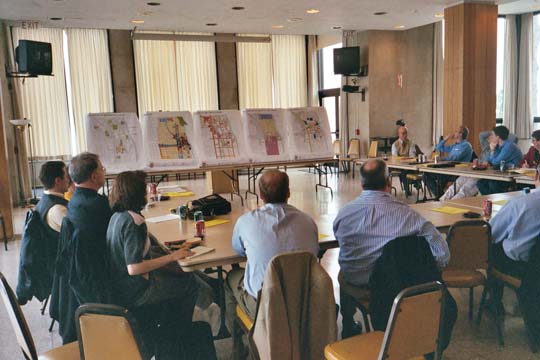At one time, the term “Master Plan” had a meaning that all who used it seemed to understand. Today, it has lost that meaning: it seems as if any planning or design is a “Master Plan.”
It reminds me of the word “love” which used to have a specific meaning and now is used casually to mean anything from copulation, to affection, to like, to zero in tennis.
Most colleges and universities use the term master plan with little understanding
or differentiation.
Architects are notorious for using the term “master” for almost any project — all plans, or rather designs, are “master plans.” In addition to campus master plans, I have seen master plans for a section of a campus, and master plans for individual buildings. I have seen master plans for windows and master plans for toilets. What does the word “master” mean in any of these contexts? Whatever you wish — and therefore it means little — and, in fact, the use of the term adds a level of implied importance and thoroughness that is misleading. Institutions are making multimillion dollar decisions based on incomplete information and information that is out of context with the broad picture.
I once saw a university that had a science building master plan, and a master plan for a group of science buildings, and a master plan for the campus. Of course, each of these master plans had little in common.
The term master plan used to mean the predominant plan under which all other plans conform. It was meant to be the predominant plan that would give guidance and create the context for other, dependent plans, and subsequent design.
It is no longer a useful term to describe the complex, comprehensive, participatory process that integrates academic, financial, and facility planning. There are several professional planning organizations that stress the need for integrated planning. The Society for College and University Planning (SCUP) and Project Kaleidoscope (PKAL) are two examples. Both stress the need for mission, vision, and academic plan to be the driving force for campus planning. Both stress the need to integrate academics, finances, and facilities. Despite their efforts, most campus “master” plans lack an in-depth, inclusive,comprehensive planning process.
I would like us to drop the meaningless term master plan and use some other term to reflect what a master plan should actually be — integrated and comprehensive. The essential characteristics of a campus plan should be the integration of academic, financial, campus life, and facility issues. So in that regard, I vote for integrated campus planning.
Why is this important? Because the quality of campus planning has declined as the meaning of the term “master” has become diluted. As less emphasis is placed on the need to integrate academic and financial planning with physical planning, the so-called master plan has become merely a physical design.
Love,

Arthur Lidsky

University of Chicago Master Plan
|





